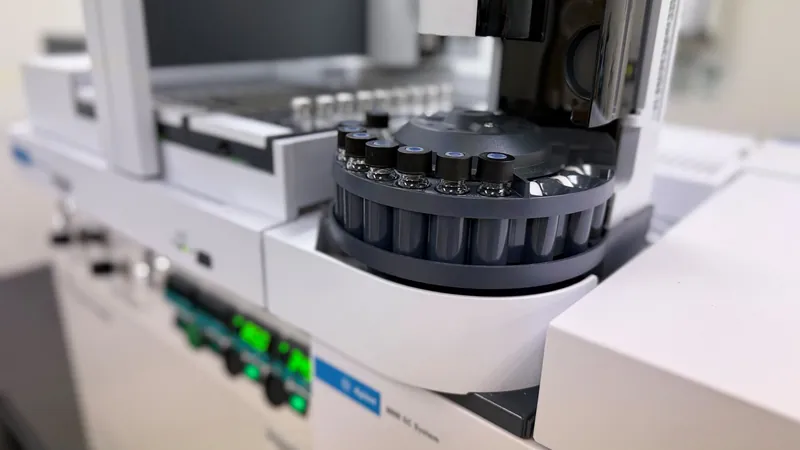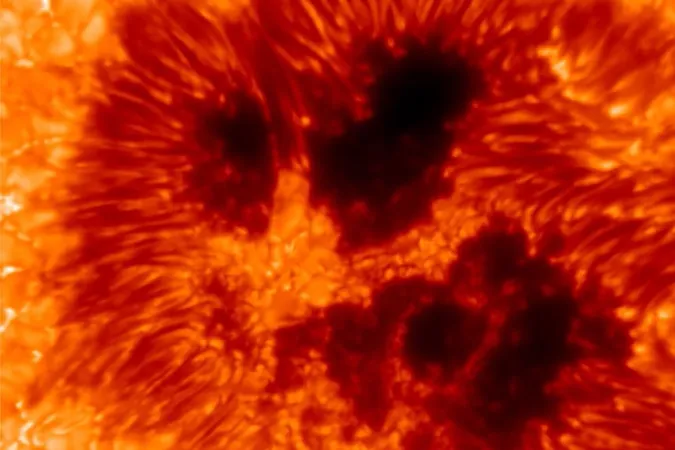
Unlocking Evolution: The Eukaryotic Revolution in Life’s Genetic Code
2025-04-22
Author: Wei Ling
A Groundbreaking Discovery in Evolutionary Biology
In a stunning collaboration among researchers from Mainz, Valencia, Madrid, and Zurich, new insights into one of nature's most significant transformations have come to light: the rise of eukaryotic cells. Recently published in the prestigious journal PNAS, this groundbreaking study reinterprets eukaryogenesis as a pivotal phase transition in life's evolutionary algorithm, effectively splitting the biological narrative into two distinct eras.
The Enigmatic 'Black Hole' of Eukaryotic Origins
While the endosymbiotic theory explaining the origins of eukaryotes enjoys broad acceptance, the intricate evolutionary journey from the merger of Archaea and Bacteria to the advent of the first eukaryotic cells remains largely elusive, referred to as the "black hole of biology." According to Dr. Enrique M. Muro from Johannes Gutenberg University Mainz, one of the lead researchers, "Our study combines theoretical and observational methods to quantitatively unravel the transformation of life's genetic architecture, which enabled this leap in complexity."
Unveiling the Secrets of Life's Genetic Code
To examine this evolutionary metamorphosis, the team delved into over 9,900 proteomes and 33,000 genomes. They unearthed a striking pattern: both protein lengths and the coding gene lengths adhere to log-normal distributions, a hallmark of multiplicative stochastic processes. Using Ockham's razor, the researchers built a mathematical model to simulate how genetic operations shaped sequence lengths from LUCA (the last universal common ancestor) to various modern species.
Crucial Findings: Shifts in Gene and Protein Evolution
Their model demonstrated a dramatic exponential increase in gene lengths throughout evolutionary history, establishing a predictable relationship between gene length variance and average protein length. Dr. Bartolo Luque from the Polytechnic University of Madrid highlighted the implications: "Knowing the average length of protein-coding genes allows us to predict the entire distribution of gene lengths within a species.”
A Pivotal Evolutionary Threshold
The research yielded a remarkable distinction when analyzing gene and protein evolution in prokaryotes versus eukaryotes. In simpler organisms, gene and protein lengths evolved in tandem. However, a crucial turning point emerged at an average gene length of 1,500 nucleotides. At this stage, protein lengths plateaued around 500 amino acids, while gene lengths continued to expand—ushering in the age of non-coding sequences and the emergence of eukaryotic cells.
The Algorithm of Evolution: A New Perspective
This evolutionary shift resembles a phase transition, akin to phenomena observed in physics, such as magnetism. The researchers noted a "critical slowing down" at this gene length threshold, indicating a metastable state, observable in early eukaryotic lineages like protists and fungi, as remarked by Dr. Fernando Ballesteros from the University of Valencia.
Revolutionizing Biological Innovation
Beyond the biological implications, the study presents an algorithmic perspective on evolution. Professor Jordi Bascompte of the University of Zurich explains that the drive to evolve longer proteins intensified as gene lengths increased, complicating further innovation within the original algorithmic framework. The solution arrived with the introduction of introns and regulatory elements, facilitating gene enlargement without corresponding protein growth. This evolution of the spliceosome, coupled with the compartmentalization of transcription and translation, significantly streamlined biological complexity.
Marking a New Era in Life's Evolution
Dating this transformative period to approximately 2.6 billion years ago, the research suggests that the emergence of eukaryotes represented a shift from a linear to a non-linear evolutionary algorithm. This shift established the groundwork for monumental biological innovations such as multicellularity and sexual reproduction.
An Interdisciplinary Breakthrough
Dr. Muro emphasized the interdisciplinary nature of this study, blending computational biology, evolutionary theory, and physics. He asserts, "This research has the potential to captivate a wide audience across various fields and may inspire future inquiries into areas such as energy or information theory."
The Future of Evolutionary Research
This exciting study not only sheds light on the complexities of life's origins but also opens numerous avenues for future research, promising to redefine our understanding of evolution for years to come.






 Brasil (PT)
Brasil (PT)
 Canada (EN)
Canada (EN)
 Chile (ES)
Chile (ES)
 Česko (CS)
Česko (CS)
 대한민국 (KO)
대한민국 (KO)
 España (ES)
España (ES)
 France (FR)
France (FR)
 Hong Kong (EN)
Hong Kong (EN)
 Italia (IT)
Italia (IT)
 日本 (JA)
日本 (JA)
 Magyarország (HU)
Magyarország (HU)
 Norge (NO)
Norge (NO)
 Polska (PL)
Polska (PL)
 Schweiz (DE)
Schweiz (DE)
 Singapore (EN)
Singapore (EN)
 Sverige (SV)
Sverige (SV)
 Suomi (FI)
Suomi (FI)
 Türkiye (TR)
Türkiye (TR)
 الإمارات العربية المتحدة (AR)
الإمارات العربية المتحدة (AR)